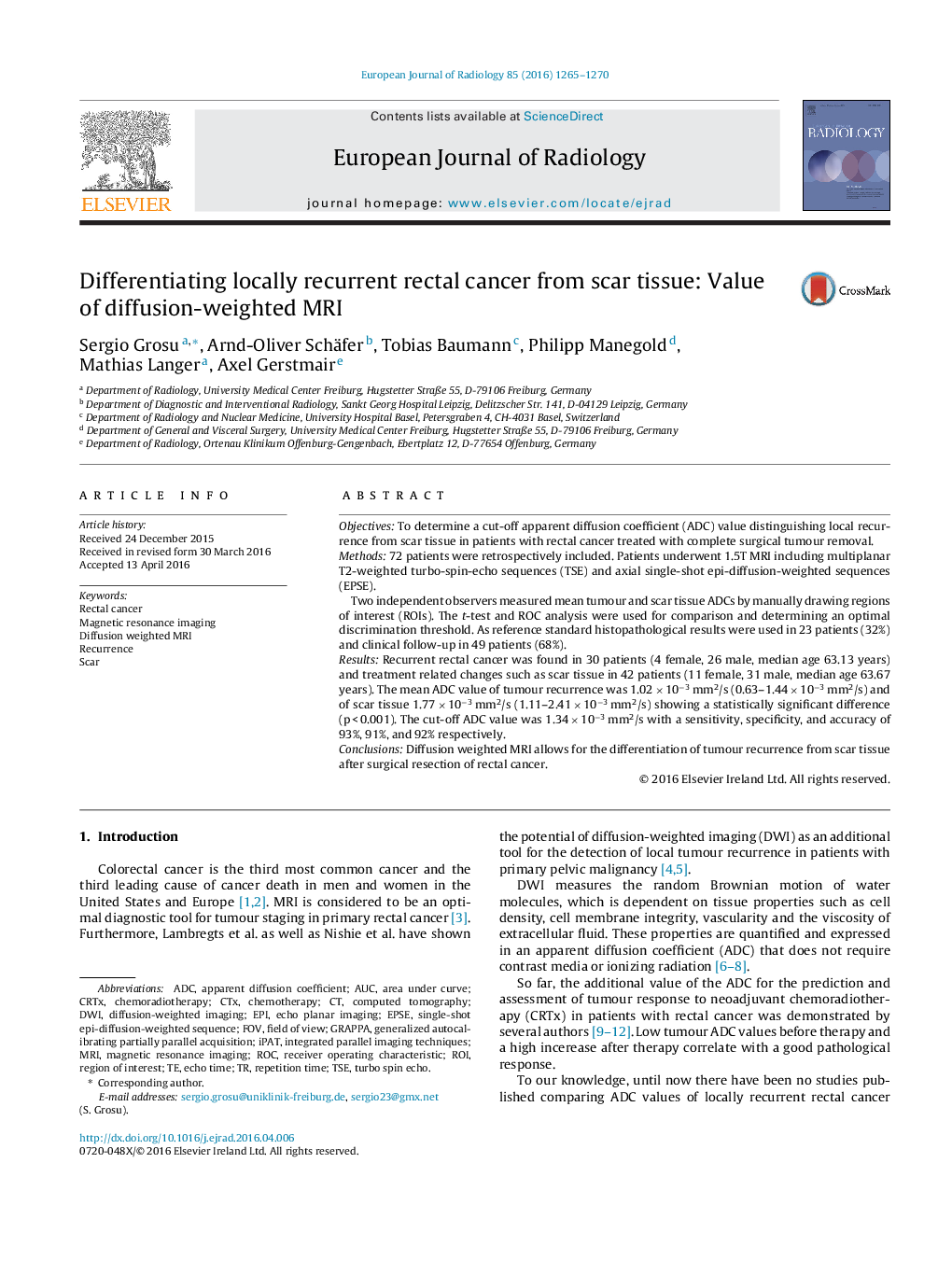| Article ID | Journal | Published Year | Pages | File Type |
|---|---|---|---|---|
| 4224804 | European Journal of Radiology | 2016 | 6 Pages |
•DWI helps in distinguishing local recurrence from scar-tissue in rectal cancer.•The cut-off value for tumour vs. scar-tissue ADC was 1.34 × 10−3 mm2/s.•Statistical fortification of the diagnosis.
ObjectivesTo determine a cut-off apparent diffusion coefficient (ADC) value distinguishing local recurrence from scar tissue in patients with rectal cancer treated with complete surgical tumour removal.Methods72 patients were retrospectively included. Patients underwent 1.5T MRI including multiplanar T2-weighted turbo-spin-echo sequences (TSE) and axial single-shot epi-diffusion-weighted sequences (EPSE).Two independent observers measured mean tumour and scar tissue ADCs by manually drawing regions of interest (ROIs). The t-test and ROC analysis were used for comparison and determining an optimal discrimination threshold. As reference standard histopathological results were used in 23 patients (32%) and clinical follow-up in 49 patients (68%).ResultsRecurrent rectal cancer was found in 30 patients (4 female, 26 male, median age 63.13 years) and treatment related changes such as scar tissue in 42 patients (11 female, 31 male, median age 63.67 years). The mean ADC value of tumour recurrence was 1.02 × 10−3 mm2/s (0.63–1.44 × 10−3 mm2/s) and of scar tissue 1.77 × 10−3 mm2/s (1.11–2.41 × 10−3 mm2/s) showing a statistically significant difference (p < 0.001). The cut-off ADC value was 1.34 × 10−3 mm2/s with a sensitivity, specificity, and accuracy of 93%, 91%, and 92% respectively.ConclusionsDiffusion weighted MRI allows for the differentiation of tumour recurrence from scar tissue after surgical resection of rectal cancer.
